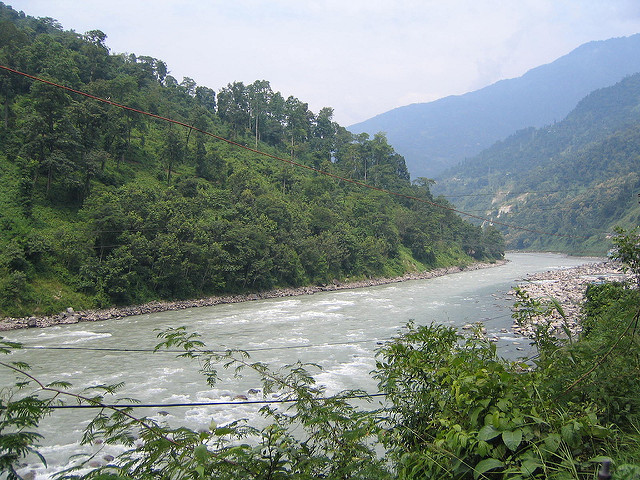
The degradation of the Himalayan ecosystem is emerging as one of the major concern for ecologists and environmentalists across the country. The most burning environmental issue faced by Sikkim currently is the installation of dams on Teesta and adjoining rivers and submergence of valleys for the construction of hydroelectric projects. Of late, Sikkim–with a mere geographical extension of about 7096 sq km–has seen the sprouting up more than thirty haphazard and ad hoc mega hydroelectric power projects.
The Comptroller & Auditor General (CAG) of India, in its 2008-09 report, recommended the state government to strengthen the monitoring and vigil aspects of the hydel power projects execution by setting up a system of Independent Power Projects (IPPs). After reviewing the performance of the hydel power thrust of the State Government, it was said that the “monitoring of execution of projects was virtually non-existent” in the state.
It has been said that the creation of reservoirs, fluctuation in natural river discharge and diversion of river waters through closed tunnels would completely change the ecological conditions of the river systems. Alongwith the submergence of rivers and valleys by hydro power plants, deforestation, pollution of fresh water sources, and improper sewage disposal are some of the major factors which are affecting the Himalayan ecosystem directly.
The CAG also called it necessary to make adequate provisions in the environment plans for designing suitable measures to mitigate the effect of hydel power projects on aquatic life of Sikkim. Sikkim has 63 species of phytoplanktons, 17 species of zooplanktons and 48 species of fish inhabiting state’s river systems.
The Chairman & Managing Director of NHPC, Mr. S. K. Garg said that while developing hydropower projects, NHPC is very sensitive and concerned about R&R and environmental issues and has adopted a very balanced approach. He said that the NHPC obtained site, environment and forest clearances as per the statutory requirements and also tried to utilize minimum forest area.
Environment Impact Assessment(EIA) is conducted and based on that, an environment management plan (EMP) is framed to properly address the environmental issues. Close monitoring is done to ensure effective implementation of EMPs. Post-construction EIA, to evaluate pre- and post-construction scenario and ascertain the efficacy of environment management plan is also undertaken.
Keeping the above statements in mind, made by the NHPC, about the guidelines followed prior to starting the project, it was reported by the CAG that were many gaps in the proposed plans. The CAG said that the EMPs for the projects had been prepared through assessment of secondary data without any diligent study or observation and no proper time series research of prevailing ground realities was done.
The Catchment Area Treatment (CAT) plans for the various power projects was prepared without taking into account the field requirement for survival of the plantations and were therefore said to be arbitrary and inadequate. It also rejected the reply of the State Forest Department on the issue accusing the department of not ensuring adherence to the plans to the prevalent norms.
Since 2007, many Hydroelectric power projects have been scrapped and the latest to be scrapped was the proposed 96 MW Lethang Hydro Power Project in Yuksam, West Sikkim on October 13th, 2010. The chief reason for this was the stiff opposition from local communities citing the project as a violation of religious sentiments.
Even though both, the closed down as well as the running projects, promised perks to the local people, like IT based jobs to educated etc., it has been nothing but a mere disappointment. Educated individuals have been given work as normal labourers instead of what was initially promised. At the same time, the manner of work is a threat to the natural environment thereby causing the unpredictable landslides, road damage (during transportation of the construction materials), etc.
Only if the hydroelectric power project managers could come up with a well-planned and scientific project such that it caters to mankind and also to the people of the state, in terms of their religious and cultural sentiments, could proper utilization of the natural resources of Sikkim be possible. If the proposed projects took into account this and the economic growth and development of the state as well as the environment in terms of the flora and fauna, they would have surely been welcomed by the people with open hands.
Image by timeflicks via Flickr courtesy Creative Commons

One thought on “Ill Planned Hydroelectric Projects: The Burning Environmental Issue in Sikkim”